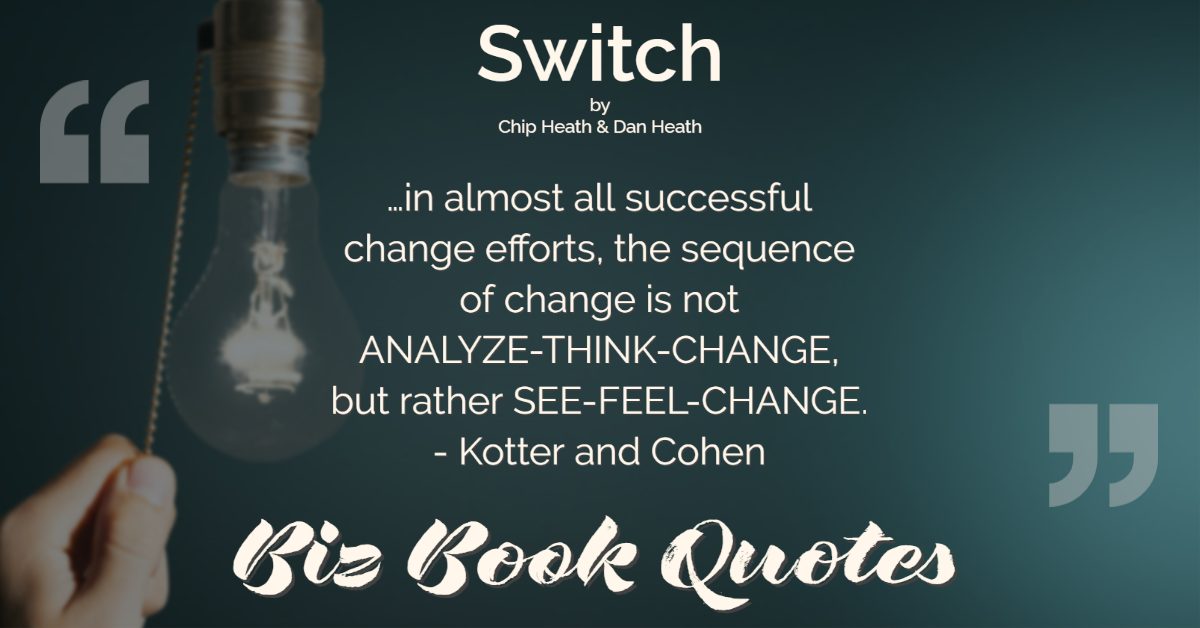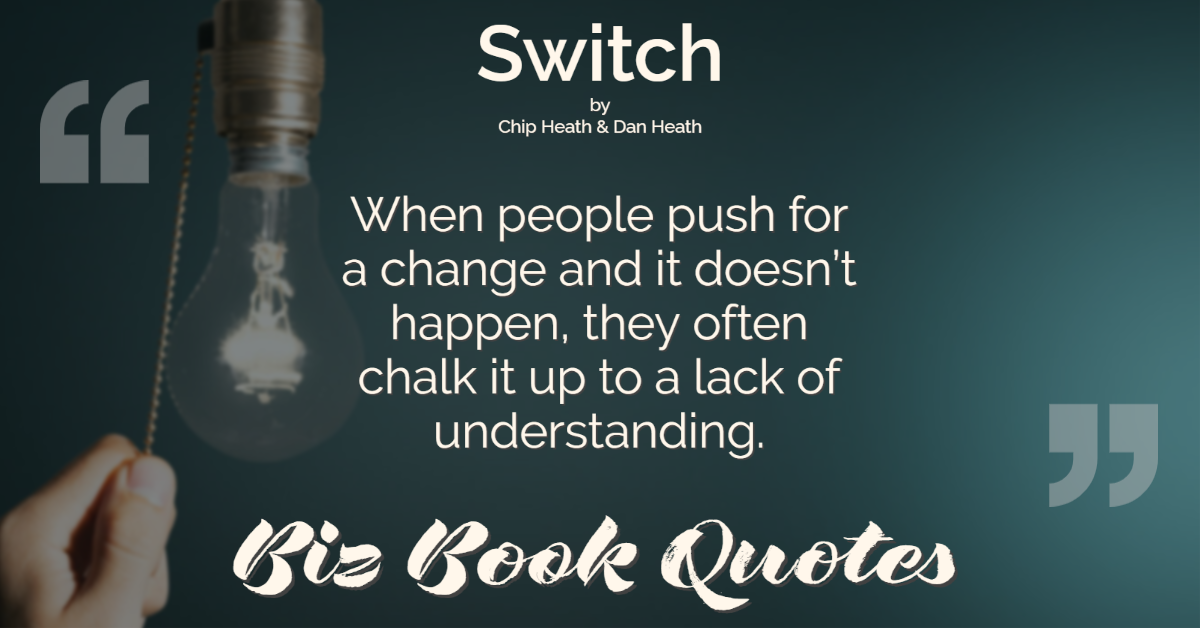 |
To pursue the bright spots is to ask the question ‘What’s working, and how can we do more of it?’
|
45 |
 |
…decision paralysis can be deadly for change – because the most familiar path is always the status quo.
|
53 |
 |
Big-picture, hands-off leadership isn’t likely to work in a change situation, because the hardest part of change – the paralyzing part – is precisely in the details.
|
53 |
 |
Change begins at the level of individual decisions and behaviors, but that’s a hard place to start because that’s where the friction is.
|
56 |
 |
Inertia and decision paralysis will conspire to keep people doing things the old way.
|
56 |
 |
If you’re leading a change effort, you need to remove the ambiguity from your vision of change.
|
62 |
 |
Until you can ladder your way down from a change idea to a specific behavior, you’re not ready to lead a switch.
|
63 |
 |
In most change situations, the parameters aren’t well understood, and the future is fuzzy.
|
106 |
 |
…in almost all successful change efforts, the sequence of change is not ANALYZE-THINK-CHANGE, but rather SEE-FEEL-CHANGE. – Kotter and Cohen
|
106 |
 |
When people push for a change and it doesn’t happen, they often chalk it up to a lack of understanding.
|
112 |